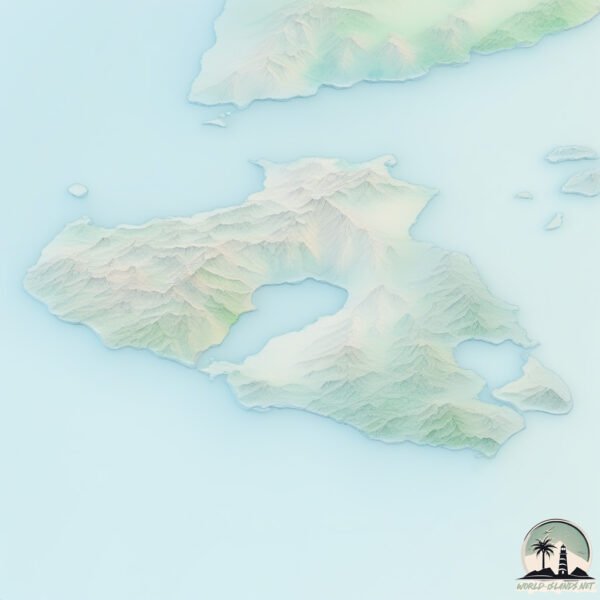Welcome to Lesbos , a Temperate island in the Aegean Sea, part of the majestic Atlantic Ocean. This guide offers a comprehensive overview of what makes Lesbos unique – from its geography and climate to its population, infrastructure, and beyond. Dive into the details:
Geography and size of Lesbos
Size: 1638 km²Coastline: 372 kmOcean: Atlantic OceanSea: Aegean SeaContinent: Europe
Lesbos is a Very Large Island spanning 1638 km² with a coastline of 372 km.
Archipel: Mediterranean islands – Encompassing numerous islands in the Mediterranean Sea, each with its own unique culture, history, and natural beauty, from the Balearics to the Greek islands.
Tectonic Plate: Aegean Sea – Located in the eastern Mediterranean, this microplate is characterized by seismic and volcanic activity due to its interaction with the Eurasian and African Plates.
The geographic heart of the island is pinpointed at these coordinates:
Climate and weather of Lesbos
Climate Zone: TemperateClimate Details: Hot-Summer Mediterranean ClimateTemperature: Hot Summer
Climate Characteristics: Characterized by hot, dry summers and mild, wet winters, typical of coastal areas with abundant sunshine.
Topography and nature of Lesbos
Timezone: UTC+02:00Timezone places: Europe/MariehamnMax. Elevation: 848 m Mean Elevation: 216 mVegetation: Agricultural MosaicTree Coverage: 29%
The mean elevation is 216 m. The highest elevation on the island reaches approximately 848 meters above sea level. The island is characterized by Plateau: Elevated flatlands rising sharply above the surrounding area, with a maximum elevation over 500 meters but a mean elevation less than 300 meters, forming unique highland areas on islands.
Dominating Vegetation: Agricultural Mosaic
Vegetation: 16 vegetation zones – Exceptionally Diverse Island
Infrastructure and Travelling to Lesbos
Does the island have a public airport? yes .
Does the island have a major port? yes .
The mean population of Lesbos is 52 per km². Lesbos is Gently Populated. The island belongs to Greece .
The name of the island resonates across different cultures and languages. Here is how it is known around the world: Arabic: لسبوس; German: Lesbos; Spanish: Lesbos; French: Lesbos; Portuguese: Lesbos; Russian: Лесбос; Chinese: 莱斯博斯岛
Continuing your journey, Alibey Adasi is the next notable island, situated merely km away.
Welcome to Petra, a must-visit destination on #Lesbos Island #Greece #Beaches of golden sand and crystal clear azure waters.
Lesbos Greece | Exotic beaches | Top places | Greek islands travel guide | Petra
Welcome to Petra, a must-visit destination on #Lesbos Island #Greece ...
Welcome to Petra, a must-visit destination on #Lesbos Island #Greece #Beaches of golden sand and crystal clear azure waters.
LESBOS | WHAT YOU NEED TO KNOW
After 14 days of quarantine I am finally out! Here are a few facts ...
After 14 days of quarantine I am finally out! Here are a few facts about Lesbos that might interest you if you are thinking on visiting ...
Lesvos: Is This Island GREECE'S BEST-KEPT SECRET?
I decided to visit one of Greece's last authentic islands, which isn't ...
I decided to visit one of Greece's last authentic islands, which isn't overrun with tourists: Lesvos, often known as Lesbos. Greece's ...
Greece is classified as Emerging region: MIKT: Mexico, Indonesia, South Korea, and Turkey – Economies recognized for their development potential and emerging market status. The level of income is Upper middle income.
News – Latest Updates and Headlines from Lesbos
Stay informed with the most recent news and important headlines from Lesbos. Here’s a roundup of the latest developments.
Social Media Posts about Lesbos
Loading...
Please note: The data used here has been primarily extracted from satellite readings. Deviations from exact values may occur, particularly regarding the height of elevations and population density. Land area and coastline measurements refer to average values at mean high tide.

